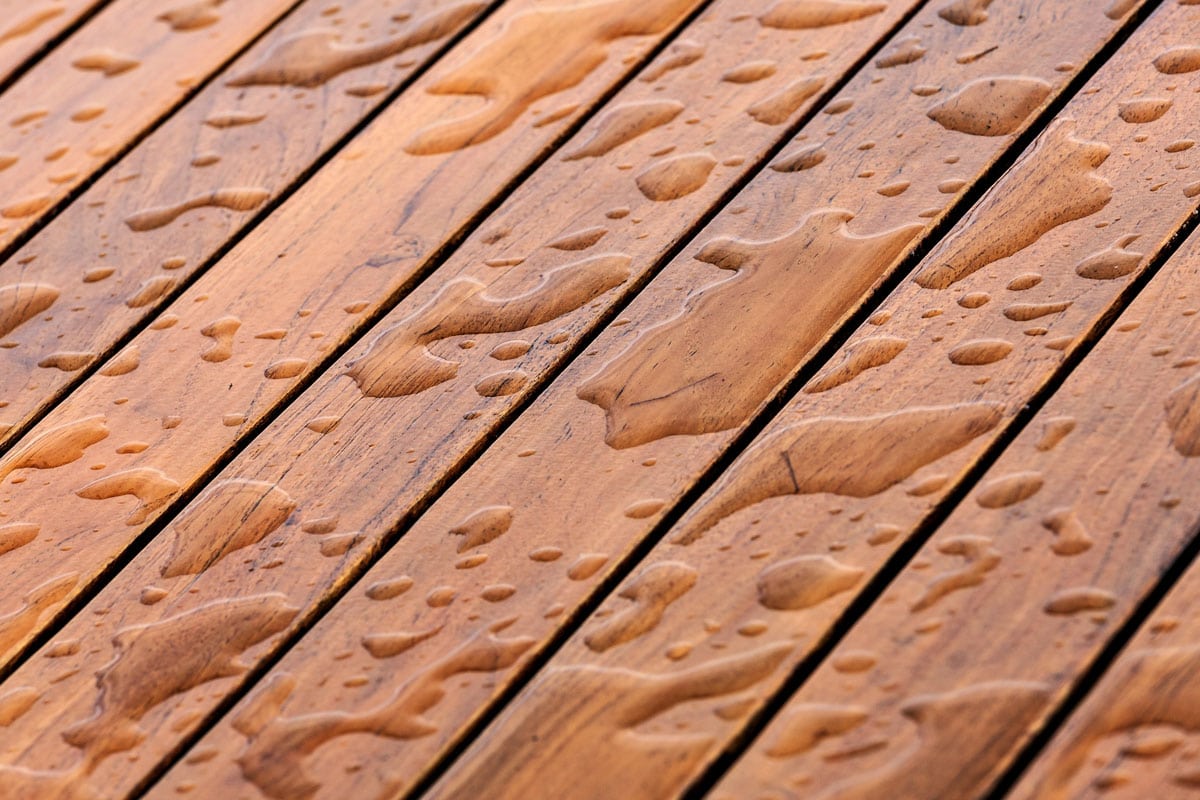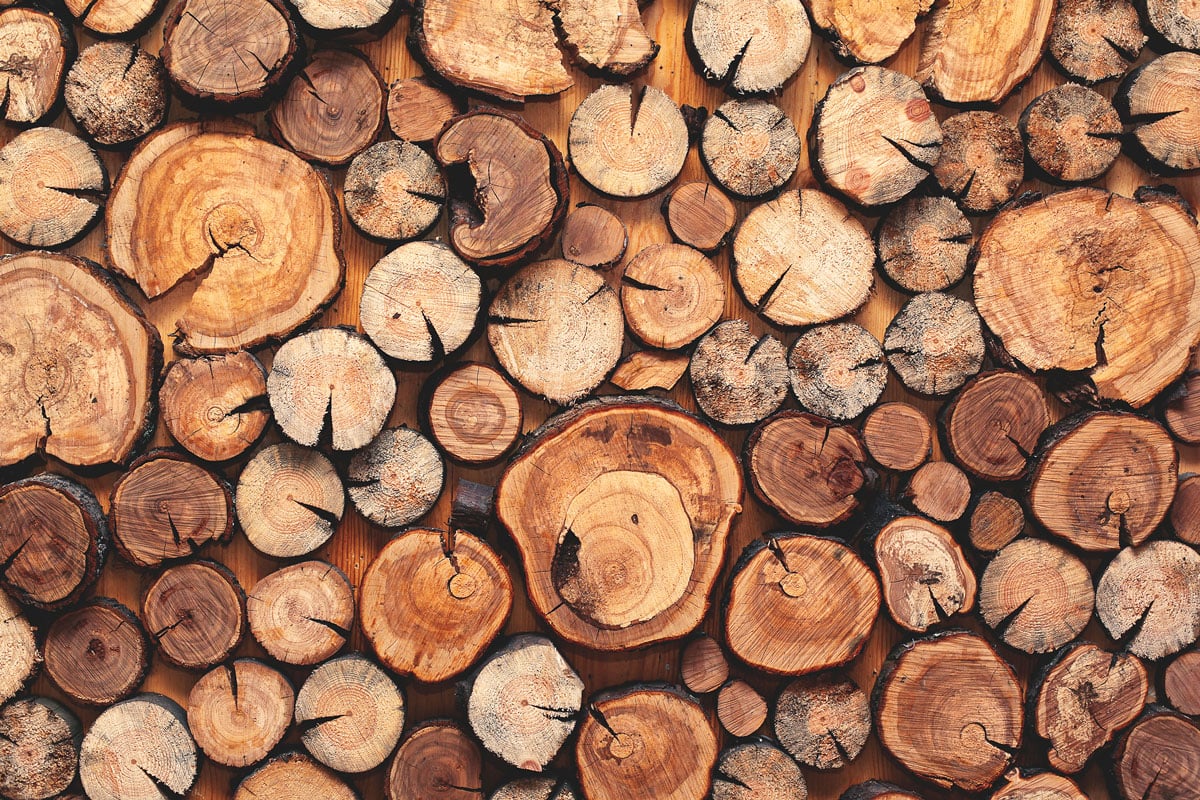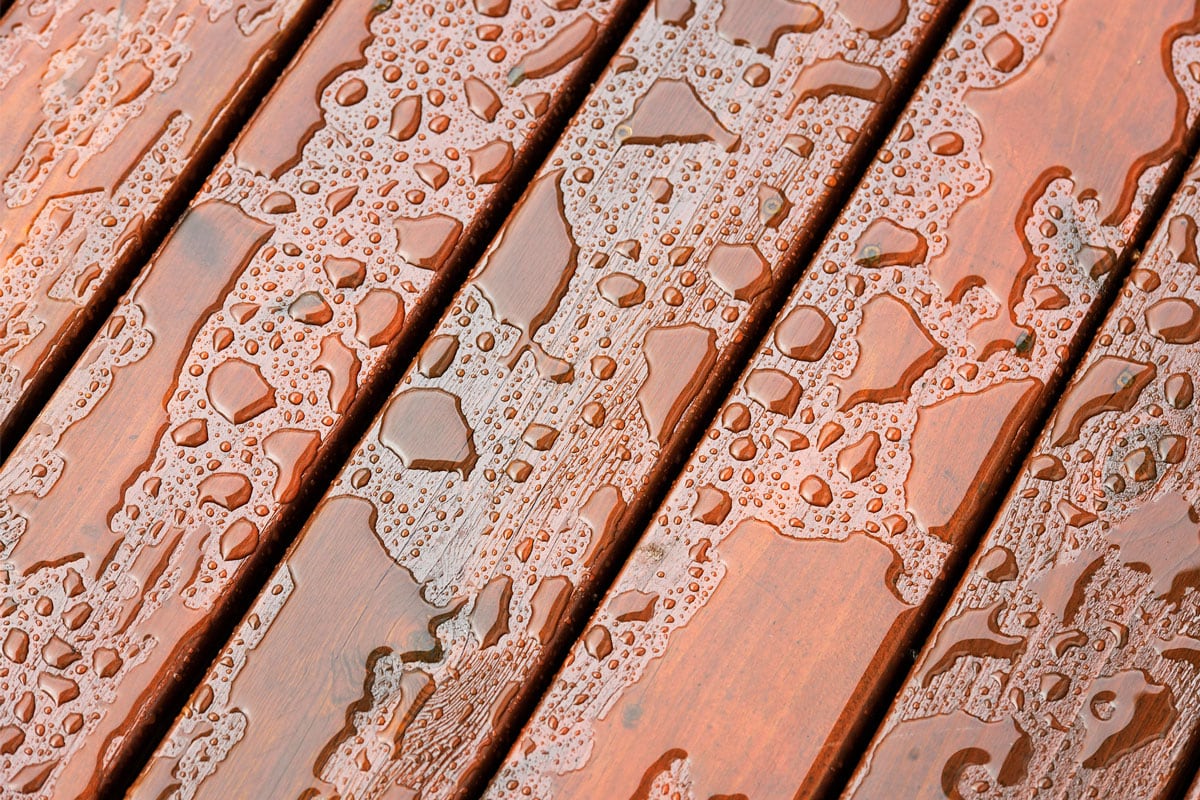Do you have wooden furniture, firewood, or wooden material left out in the rain and soaked in water? Wet wood can be distressing because the moisture can ruin the material and lead to rotting. Now you must be wondering how long it takes for wood to dry and what are the ways to dry it faster. We researched this information for you, and here's the answer.
Wood can take anywhere between a few days to two weeks to dry completely. The length of time depends on the type of wood, its size, weather conditions, and humidity. Wood can dry up faster if you place it near a warm area like a fireplace or outdoors under the sun and where it's windy.
If you want to know more about how to dry wood faster, we'll share below some great tips. Additionally, we'll tackle the various factors that can affect the wood drying process. Let's get to it.

How Long Does Water Take To Dry On Wood?
If you're planning to leave wet wood outdoors to dry, take note that the average time to dry out wood completely is about one to two weeks, depending on the humidity in the environment.
If wood is left wet for a few days, it will germinate spores and begin the rotting process, so it's important to dry it as soon as possible.

The amount of natural water in wood is called moisture content (MC). Wood is considered dry if its MC is reduced to 19% with a 28% fiber saturation.
There are three factors that can help increase the surface evaporation rate to dry the wood faster:
- The rate of air flowing around the wood
- The warm air temperature surrounding the wood
- Reduction of relative humidity in the air
There are many variations when answering how long it takes for wood to dry.
Some sources say three days, while others will say two weeks or more. This is because the time for the wood to dry depends on many factors, including the weather, type of wood, its size, and thickness.
Weather
Dry, windy, and sunny is the ideal weather combination to dry wood faster. Under these conditions, wet wood can dry up only for a few days instead of a week if you place it outdoors under the sun.
Air drying wood outdoors will be more efficient if the pieces of wood are not stacked together.
Whether it's furniture or wooden material such as construction lumber or firewood, you need to space them out to allow the wind and warm air to flow around them.
Humidity
How does humidity affect the drying rate? The rate of water evaporation from the wood is actually more affected by humidity and not by how warm the ambient temperature is.
The ideal humidity level for dry wood when you're indoors is between 30% to 50%. But when you're trying to dry a wet wood, the lower the humidity level, the faster the wood will dry up.
Below is a gadget, the hygrometer, that can help you read the humidity levels when you're indoors.
Check out the ThermoPro digital Hygrometer on Amazon.
Wood Types

Wood can be categorized into hardwood and softwood.
Examples of hardwood are oak, mahogany, maple, hickory, balsa, teak, and walnut. These are the choice wood for furniture, floors, and decks. They have a higher density and more fire-resistant than softwood. Density means the amount of wood content or volume.
Softwoods are trees such as cedar, pine, juniper, spruce, yew, and redwood. They use this material for windows, doors, furniture, to produce paper, and as Christmas trees.
Hardwood will generally take longer to dry than softwood, even if it has lesser moisture content. This is because the higher density of the hardwood makes it more difficult for the moisture trapped inside to come out.
Water evaporates from softwoods much faster because it has a lower density.
Wood Size
The size of the wood and its shape can greatly affect drying time. For instance, a huge massive wood block will surely dry longer than a broad, thin sheet of plywood.
If you have a massive wood block, the outer surface can be dry, but the inner part can still be wet. How can you tell?
One way to remove the guesswork is to use a moisture meter gadget. This measuring device checks the moisture content of wood, plaster, furniture, beams, slats, and flooring. It is a very helpful construction and renovation tool.
View this Digital Moisture Meter on Amazon.
How Do You Get Moisture Out Of Wood?

There are several ways to draw moisture out of wet wood faster, and one of the quickest ways is to place them in a heated environment. Try some of the methods below:
Dry Them Outdoors
If you're drying a piece of furniture that usually has a protective coating, experts do not recommend placing it under direct sunlight to avoid cracking and warping. You can set it on the porch or deck where it can receive indirect sunlight, wind, and low humidity.
If you're drying firewood or other wood construction materials, it would be beneficial to place them under direct sunlight for faster and more efficient drying.
Additionally, placing wood in an elevated spot where warm wind can blow throughout the surfaces will help dry the wood faster and evenly.
Indoors With A Dehumidifier
A dehumidifier is extremely helpful during wet and snowy days when there's no sun, but you still need to keep your wood dry. Set the dehumidifier to its highest extraction setting and keep it on overnight. Open up a fan to circulate air and allow the wood to dry faster.
View this bestselling hOmeLabs Energy Star Dehumidifier on Amazon.
Indoors Near A Source Of Heat
If you have a fireplace in the house or any heat source, keep the wood near it to help reduce moisture. Stack wood around the warmth so the heat will be distributed evenly.
Can You Dry Wood In The Oven For Woodworking?
If you're in a hurry to dry a few pieces of wood, there's one unconventional technique that some use. They bake the wood in a convection oven. Set the oven to 200 degrees Fahrenheit and allow the wood to bake for two hours.
It is important not to set the temperature too high or bake it too long to prevent the material from burning, cracking, or warping.
It is important to note that this method will not completely dry the wood if it is saturated. You can still end up with slightly wet wood.
If the wood still needs further drying, allow it to air dry for a bit. Repeat the process, two hours at a time, until you get your desired dryness. It would help if you had a moisture meter to check.
You can view the video below to get an idea of how to bake wood in an oven.
Is Wood Ruined If It Gets Wet?
A little rainwater will not completely ruin the wood, especially if you are able to separate them and start the drying process immediately.
If you leave the wood soaked in water for several days with a 20% or higher level of MC, it attracts fungi and starts to decay. The decaying process, however, is a slow process, and there may still be time to salvage the wood.
You can tell that wood has water damage if it becomes soft to the touch, if there are cracks if the shape starts to warp, and you start to see stains and discoloration. The decaying process will start if the wood starts to grow mold, bacteria, fungi, and other types of contaminants.
How Long Can Wood Stay Wet?

There are many scenarios that can play here. You may be building the structural foundations of your house and then it starts to rain for three days straight.
There might be a sudden storm or flood that soaks your porch, deck, and wooden furniture for several days. You must be wondering how long the wood can stay wet without causing damage.
The timeframe actually depends on the type of wood. Most types of structural wood are now pressure treated, so it doesn't easily rot even after prolonged exposure to water.
However, untreated wood can rot within 1–6 months if you are in an area where there is high humidity and the wood is exposed to dirt.
In a warmer climate, untreated wood can rot within 1–3 years if it's not painted and is frequently exposed to water. Wood can last for 10 to 20 years with proper treatment, paint, and yearly cleaning.
Takeaway

To warp it up, wet wood can take about a few days to two weeks to completely dry in a warm environment with low humidity and normal weather conditions.
Thank you for reading this far, and we hope you learned more about wood drying. For more articles related to wood materials for the home, do read our other informative articles below:



